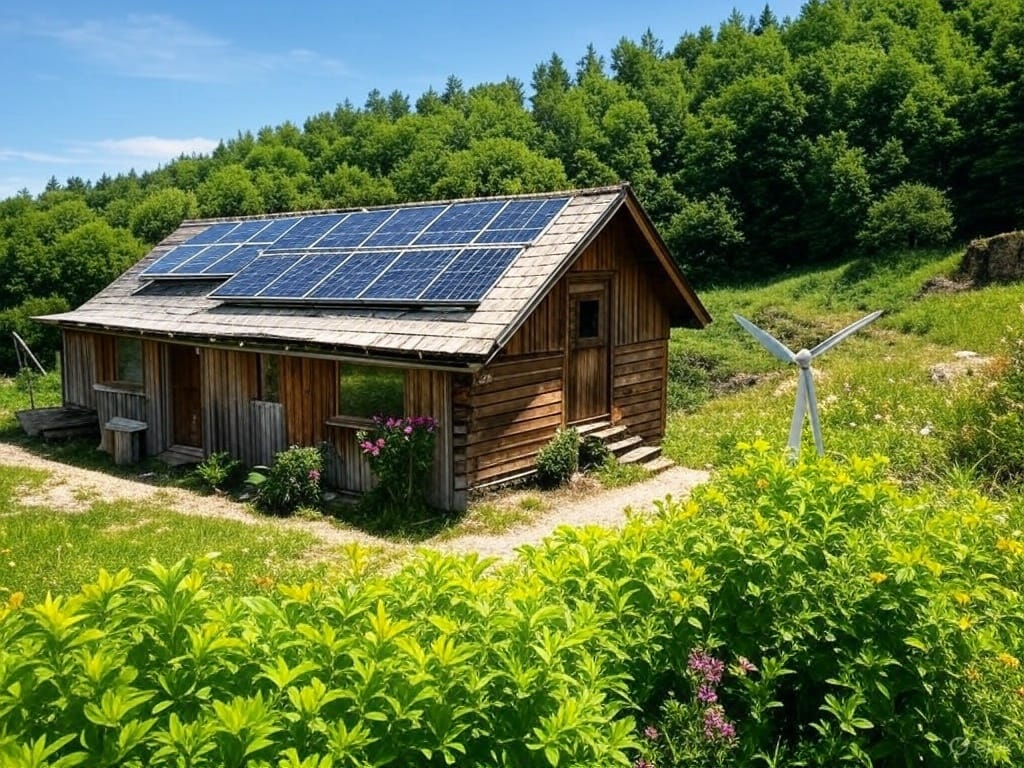Energy Independence
Discover how to achieve energy independence on a budget with affordable tools like solar chargers, small wind turbines, and DIY projects, empowering you to live sustainably without breaking the bank.

In an era where U.S. electricity prices climb 5% annually and climate concerns soar, energy independence is a practical goal. Whether you’re a prepper gearing up for emergencies, an eco-warrior shrinking your carbon footprint, or tired of high bills, going off-grid doesn’t have to cost a fortune. This beginner’s guide explores affordable tools like solar chargers, small wind turbines, and DIY projects to power your life sustainably, one budget-friendly step at a time.
Why Energy Independence Matters
Energy independence means relying less on power grids and more on renewable sources you control. It’s freedom—freedom from bills that jump $50-$100 a year, freedom from fossil fuels, and freedom to live sustainably, saving 10-20 kg of CO2 annually with just a solar charger. For preppers, it’s a safeguard against outages. For eco-conscious folks, it aligns life with values. With smart planning, it’s within reach.
Getting Started with Solar Chargers
The Power of the Sun in Your Hands
Solar chargers are the easiest entry into off-grid energy. For $20-$200, these portable devices charge phones (5W), laptops (10-20W), or small batteries. Foldable models fit in a backpack, perfect for camping or emergencies. Choose a weather-resistant charger with a built-in battery from brands like Anker or Goal Zero. Place it in sunlight—on a windowsill or campsite—and power up for free. Check Wirecutter for top picks.
Scaling Up with Solar Panels
Ready for more? A 50-100W solar panel kit ($150-$300) powers lights, fans, or a mini fridge—ideal for a cabin or emergency setup. Start small and expand as your budget allows.
Harnessing Wind with Small Turbines
Wind Power on a Budget
A micro wind turbine (100-400W, $200-$500) complements solar by generating power on cloudy or windy days. Check local wind speeds (aim for 5-7 mph) with an anemometer. Mount it on a pole, clear of obstructions, and pair it with a battery. Clean blades annually and check local zoning rules.
Combining Solar and Wind
Solar shines in summer; wind powers fall and winter. Together, they ensure year-round energy without industrial-scale costs.
Building a Battery Backup
Storing Your Energy
Batteries store power for cloudy or calm days. A 12-volt, 100 amp-hour lead-acid battery ($100-$200, 3-5 years lifespan) or lithium-ion (10+ years) runs lights or electronics. Use a $20-$50 charge controller for safety, store in a ventilated area, and add a battery monitor to track levels.
Keeping Costs Down
Start with one battery, repurpose used ones (safely tested), and scale up later.
Energy Efficiency: The Unsung Hero
Cutting Consumption First
Use less, generate less. LEDs ($10) save 75% energy, a 50W fridge saves $15/year, and insulation retains heat. A $10 energy meter pinpoints wasteful devices.
Practical Efficiency Tips
Cook with a solar oven, use hand-crank gadgets, and insulate your space to cut energy needs by 20-30%.
DIY Projects for the Budget-Conscious
Homemade Solar Heaters
Build a solar heater from aluminum cans and a wooden frame (under $50) to warm a room. Search “DIY solar heater” on YouTube, and ensure ventilation.
Hand-Crank Generators
A $20-$40 hand-crank generator or DIY bike alternator charges batteries fuel-free. Check Instructables.com for plans.
Planning Your Off-Grid Journey
Start Small, Think Big
Start with a $20 solar charger, test it for a month, then add a $100 battery. Aim to power one device in 3 months, a room in a year.
Resources and Community
Join Reddit’s r/OffGrid or local eco-groups. YouTube and Instructables.com offer free DIY guides.
Common Pitfalls to Avoid
- Calculate energy needs with a $10 meter.
- Check zoning for turbines or large panels.
- Test batteries monthly and clean panels/turbines.
The Rewards of Going Off-Grid
Energy independence is liberating. A $20 solar charger saves 10 kg of CO2 a year; a small panel could save $100 annually. Start today: Buy a solar charger and power your phone off-grid by tomorrow.





